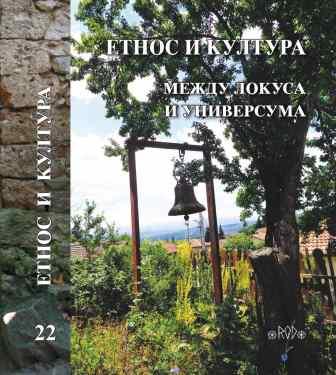САМУИЛОВА КРЕПОСТ – ИСТОРИЯ НА ОБЕКТА И ВЪЗМОЖНОСТИ ЗА ЕКСПОНИРАНЕ
THE TSAR SAMUEL FORTRESS – HISTORY OF THE OBJECT AND THE EXPOSITION POSSIBILITIES
Author(s): Sotir IvanovSubject(s): History, Anthropology, Social Sciences, Archaeology, Cultural history, Ethnohistory, Local History / Microhistory, Military history, Political history, Ancient World, Middle Ages, Cultural Anthropology / Ethnology, Culture and social structure , 6th to 12th Centuries
Published by: Асоциация за антропология, етнология и фолклористика ОНГЬЛ
Keywords: Tsar Samuel; fortifications; National Park-Museum “Samuil’s Fortress”, virtual expositions;
Summary/Abstract: The medieval fortifications of Tsar Samuel in the valley of the Strumeshnitsa River were first identified by Bogdan Filov in 1916. The National Park-Museum “Samuil’s Fortress” construction is a wellplanned and executed project. The first step is the settlement of the site’s legal status. In 1965, comes the declaration of Samuil Fortress as an architectural and structural monument of culture of Antiquity and the Middle Ages with the category “of national importance” (State Gazette No. 32/1965) and according to §10 of the Cultural Heritage Act (State Gazette No. 19/13.03.2009, amended and supplemented) has the status of a registered single archaeological immovable cultural property with the category “of national importance.” The second step includes the archaeological investigations from 1968 to 1976, which proved the identity of the registered fortifications on the Samuil Fortress hill with those described in medieval sources. Unfortunately, no strategic plan for archaeological investigations has been drawn up, and consequently, the entire length of the rampart has yet to be investigated. As a result, the configuration, the authentic level, the main approach to the fortification, the construction of the fortification on the hill, and its relationship to the rest of the fortification system built between the mountains Belasitsa and Ograzhden are not completely clear. The third step in realizing the Samuil Fortress relates to constructing King Samuel’s and his warriors’ sculptural compositions. The sculptor, prof. Boris Gondov is the author, along with the architects Rositsa Gon- 164 dova and Evgenia Kashavelova. As a result, in the construction of the memorial composition at the foot of the Samuil Fortress hill, a harmonious synthesis between architectural, sculptural volumes and the natural setting, set against the backdrop of the Belasitsa and Oгражден mountains, was achieved. The fourth step relates to the work of the National Institute of Immoveable Cultural Heritage. In just three years, from 1980 to 1982, the institute developed a complex project for the conservation and exposure of the Samuil Fortress. Opened on 23.10.1982, the National Park-Museum “Samuil’s Fortress” is more a memorial, monumental-decorative, and artistic than an archaeological and historical view of Bulgarian history. It creates a significant gap in the exposition related to the importance of King Samuel and the Battle of the Kliuchka Gorge for Bulgarian history. Our joint project with Billa Bulgaria from 15.07.2020 allowed the use of possibilities for virtual exhibitions that do not require a physical display, have relatively low maintenance costs, and offer online access. During the project, the exhibition concept was significantly changed. Among the essential activities are the 16 holographic showcases and one holographic pyramid, a Plexiglas’s frame with graphics of the protective facilities and dugouts, and their interactive presentation, respectively, videos with subtitles in English.
Journal: Годишник на Асоциация за антропология, етнология и фолклористика »Онгъл«
- Issue Year: 2023
- Issue No: 22
- Page Range: 150-164
- Page Count: 15
- Language: Bulgarian
- Content File-PDF

